November Events
Marcus's head and neck strength continues to improve, as do his coordination, his finger-sucking skills, and the fatness of his arms.
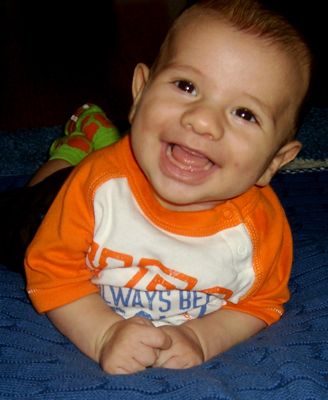

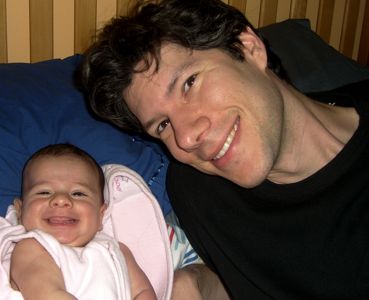
Mona came to Boston to visit briefly and to meet Marcus. Meanwhile, even when he can't visit with his Great-Grandma Helena, Marcus loves talking to her on the telephone (with just a tiny bit of help from Robert).
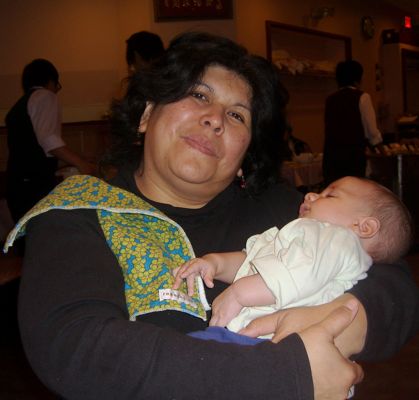

The weather in Boston quite suddenly got very cold: Marcus wears his brown bear fleece bunting over pants and a shirt, and then I wear the brown bear baby inside the Moby wrap inside my jacket. We managed to keep each other toastily warm, despite the 20-degree temperatures.
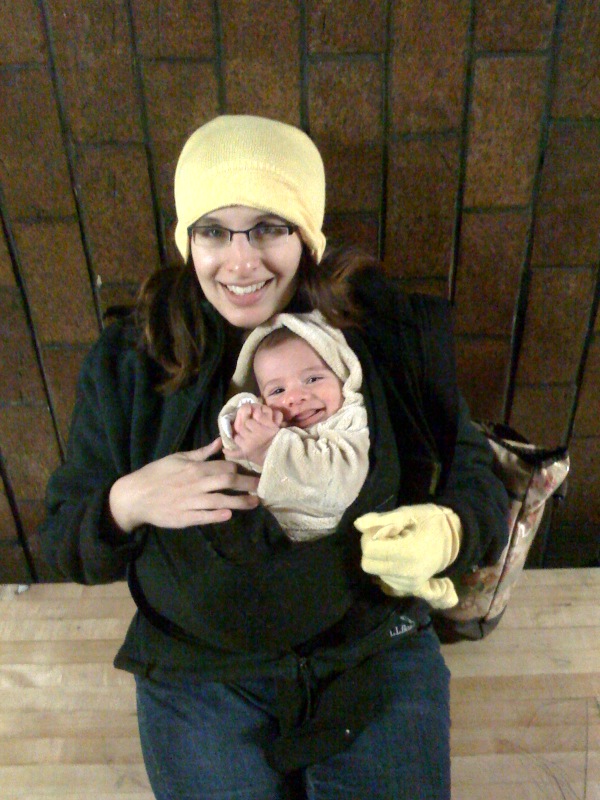
One of Robert's favorite illicit hobies is taking pictures of me and Marcus when we're sleeping. That whole "sleep when the baby sleeps" thing people keep saying? It's a fabulous idea. Most days I don't manage to nap when he naps, but occasionally I do, and almost always Robert happens to be there to snap a picture.
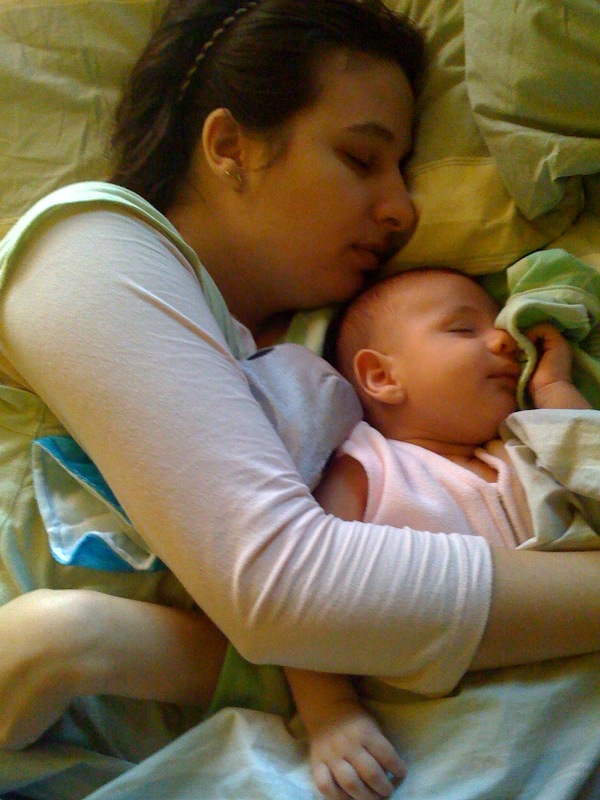

Below are two short videos below from November--one of a happy baby kicking in anticipation of a diaper change, and one of Marcus gurgling a long monologue into a blanket.
Finally, I continue my reading into feminist perspectives on birth, home birth, and motherhood. . . here are some moving and wonderful passages I stumbled on this month from Laboring On: Birth in Transition in the United States, by Wendy Simonds, Barbara Katz Rothman, and Bari Meltzer Norman.
I came to the decision to have a home birth from feminism. . . which made us all critical of the ways that major institutions of our society treated women, and in particular of the way that medicine as a profession treated the bodies of women. . . . Mine was, I guess I’d say now, . . . a highly politicized birth because, as much as anything else that was happening that day, I was making a point, proving something. I, who had never so much as seen a baby born, was showing the doctor and the world that birth did not have to be a medical event. . . .I just knew that the way birth was managed in standard hospitals was not “feminist” enough for me; it did not put the woman enough in charge, and looked awful besides.
I interviewed a midwife. . . who said she never says “It’s a boy” or “It’s a girl,” because “her whole life a woman will remember the sounds of those words, and it should be in the voice of someone she loves.”
So I sit here now rethinking that first birth, still learning from it. That birth reflected who I was, what mattered to me at that time. That birth was me, mine. And that is as it should be, as all births should be: reflections of the woman giving birth. Every birth teaches us about the woman who is birthing—her life, her community, her society. . . .We shape our births, and our births shape us. . . ; they shape who we become; they show us parts of ourselves; they make us face death and life, the body and the soul; and we’re never the same afterwards.
Birth is, I learned and I can say with clarity now, about women. That’s what the midwives taught me, and that’s what my own experiences have shown me. Birth is not about babies. Babies get born. But women give birth. Giving birth is awesome. Babies are miracles, and cute besides, but birth is an Event. It is Something. It is a life-shaking, developmental moment that makes you who you are, that teaches you who you are.
To trust the home as a place for birth is fundamentally to trust the woman to give birth—and that is the fundamental trust that most of this country now has lost. The power that is the birthing woman’s has been drained from her and given to the institution in which she is placed. Giving birth at home returns that power to the woman.
Midwifery, as many midwives conceive of it, can be revolutionary feminist practice. As Ina May Gaskin put it: “You know I’ve always been convinced that as a society we’re doing it all wrong and that we need to utterly change it” (cited in Schlinger 1992: 19). In spreading the word about their worldview, that’s what midwives hope for.
In most of the United States, now it’s even harder to contemplate a home birth than it was in the 1970s. People have heard of home birth, they know that’s an option—but for fanatics, for lunatic fringers. It’s unimaginable not in principle, not as too far out to be done, but as unecessary for sensible people. The propaganda tells American women that they can get the coziness, all the home-like advantages, all that a home birth or a birth center can offer—all at their charming local hospital, with good feminist obstetricians or nurse-midwives to boot.
We do want a revolution, yes. We want a revolution in which she, the postmodern midwife. . . the midwife with her cell phone in one hand, her Internet networks, international conferences, online educational programs and licenses, her tea and herbs, and her research studies on hands-and-knees positions for breech births. . . is in charge of birth. We want obstetricians, doulas, and nurses, all listening to her as she listens to women. We want her wisdom and experience and values there in the service of the women she serves. Yes, we do get sloppy and sentimental about those midwives, a bit over the top. But hell, you have to believe in something. And midwifery, laboring on over the centuries, is about the best that we can hope for.